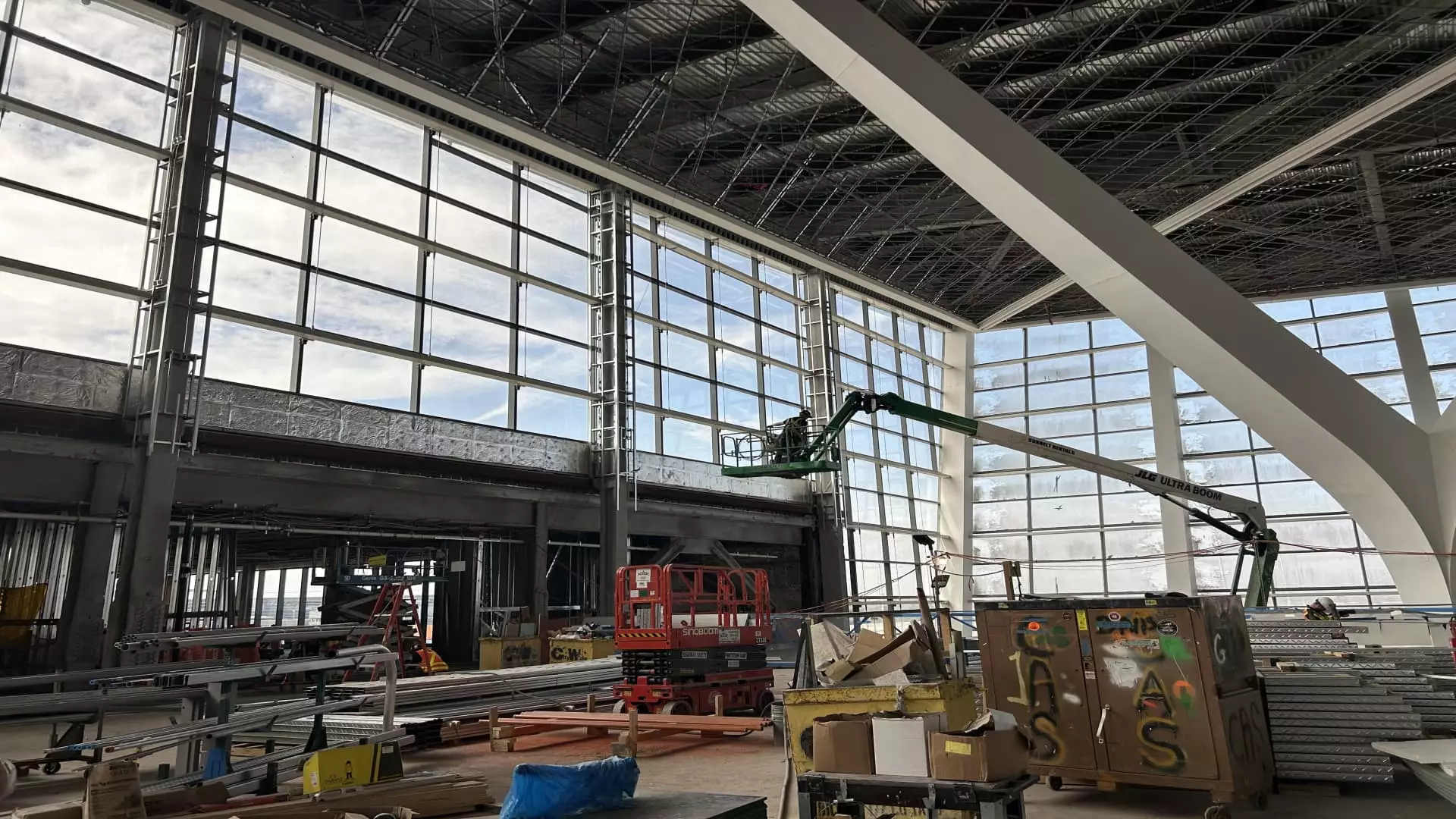New York’s JFK Airport has long been a global gateway, but its aging infrastructure has often reflected the city’s inability to keep pace with modern demands. Now, with the impending opening of Terminal 1—a $9.5 billion project—the airport is attempting to redefine its international identity. While on the surface this upgrade appears to be an essential step forward, it’s worth pondering whether the investment is justified or merely a vanity project driven by prestige rather than necessity. The ambitious scope hints at a future where JFK aims to compete with the most luxurious hubs worldwide; however, beneath that glossy veneer lies an underlying debate about priorities and strategic vision in our transportation infrastructure.
This terminal, designed to cater exclusively to international travelers, demonstrates a clear intent: to craft an experience that Washington and other major global cities can only envy. Yet, does such grandeur genuinely serve the average traveler or simply elevate JFK into an architect’s playground aimed at impressing corporate stakeholders and wealthy elites? The plan fosters a new narrative for JFK, one that could redefine its global standing, but at what cost? The project exemplifies an obsession with aesthetics and luxury upgrades over practical, cost-effective solutions that address broader transportation challenges for ordinary Americans.
Structural Innovation or Excessive Spending?
The scale of Terminal 1 is staggering, with plans to house over 300,000 square feet of retail and dining space—more than half of which will be dedicated to shopping and leisure. It’s not simply an airport terminal; it’s a lifestyle hub designed to keep travelers entertained, comfortable, and distracted from the usual frustrations associated with air travel. The architecture, inspired by the delicate shape of a butterfly, aims for an iconic silhouette, signaling that JFK wants to be remembered not just as a transit point but as a landmark.
However, this approach raises fundamental questions about the priorities of such massive expenditures. Is it truly necessary for a gateway that handles 14 million passengers annually to be so extravagantly outfitted? Critics would argue that billions could be better allocated toward fixing the transportation bottlenecks around the airport, expanding public transit options, or improving underlying infrastructure—elements that benefit a broader segment of society. Instead, the current focus seems rooted in creating a glossy image that appeals to wealthy international clients and brands seeking to showcase their global reach.
Furthermore, the project’s $19 billion overhaul by the Port Authority, and the heights of spending involved in modernization efforts across the country, suggest a narrative of excess that borders on strategic misallocation. While airports are indeed critical infrastructure, the perception of extravagance risks alienating taxpayers who fund these initiatives and who might question whether their dollar is being used prudently.
The Human Element and Practicality: Will It Deliver Real Benefits?
Beyond architecture and luxury shopping, the real test of JFK’s new Terminal 1 lies in its functional design. The promise of a “light-filled” space with consolidated security and customs on the same level aims to radically improve the passenger experience. A concept that once was a luxury—integrating departure, arrival, and customs seamlessly—becomes a necessity in a world craving efficiency and comfort.
Nevertheless, lofty ambitions often clash with reality. Will the new terminal effectively reduce long lines and delays? Can it truly handle the influx of passengers without compromising quality? The answer remains uncertain, as the project’s timeline extends uncomfortably close to the 2026 World Cup, a global event that could serve as a testing ground for the airport’s readiness. If JFK’s new flagship cannot meet expectations during this critical period, the damage to its reputation could be irreversible.
Moreover, the decision to focus solely on international travelers—at least in this phase—raises concerns about the broader impact on domestic traffic and regional connectivity. While a dedicated international hub aligns with a vision of prestige, it risks creating a sort of airport elitism that marginalizes regular travelers who rely on JFK for domestic flights or connecting services. This segmentation could foster a less integrated transportation ecosystem, counterproductive to the goal of a seamlessly functioning airport.
Strategic Significance or Missed Opportunities?
Ultimately, the new Terminal 1 is emblematic of a broader debate about America’s infrastructure priorities. It signals an aspiration to fortify JFK’s position as a global gateway, but at what expense? While the focus on architecture, customer experience, and retail offerings is commendable, the question remains whether this approach will cultivate tangible benefits for the average traveler and the city’s broader economic health.
In such a scenario, the project reveals a certain hubris—that a single, monumental upgrade can epitomize national strength and modernity. The reality, however, suggests that true leadership in transportation infrastructure requires a more holistic view—one that balances big-budget flagship projects with investments in the foundational systems that support everyday mobility.
By investing heavily in aesthetics and luxury, the risk is that JFK’s new terminal becomes less about functional excellence and more about spectacle—an airport for show, not necessarily for the diverse needs of its users. For the center-right vision I advocate—focused on prudent expenditure, strategic planning, and infrastructure that benefits everyone—this project appears to be a mixed bag. It demonstrates ambition but perhaps at the expense of realism and the broader public interest. Only time will reveal whether JFK’s upgrade will transition from a symbol of excess to an enduring asset that truly elevates New York’s place on the global stage.


Leave a Reply